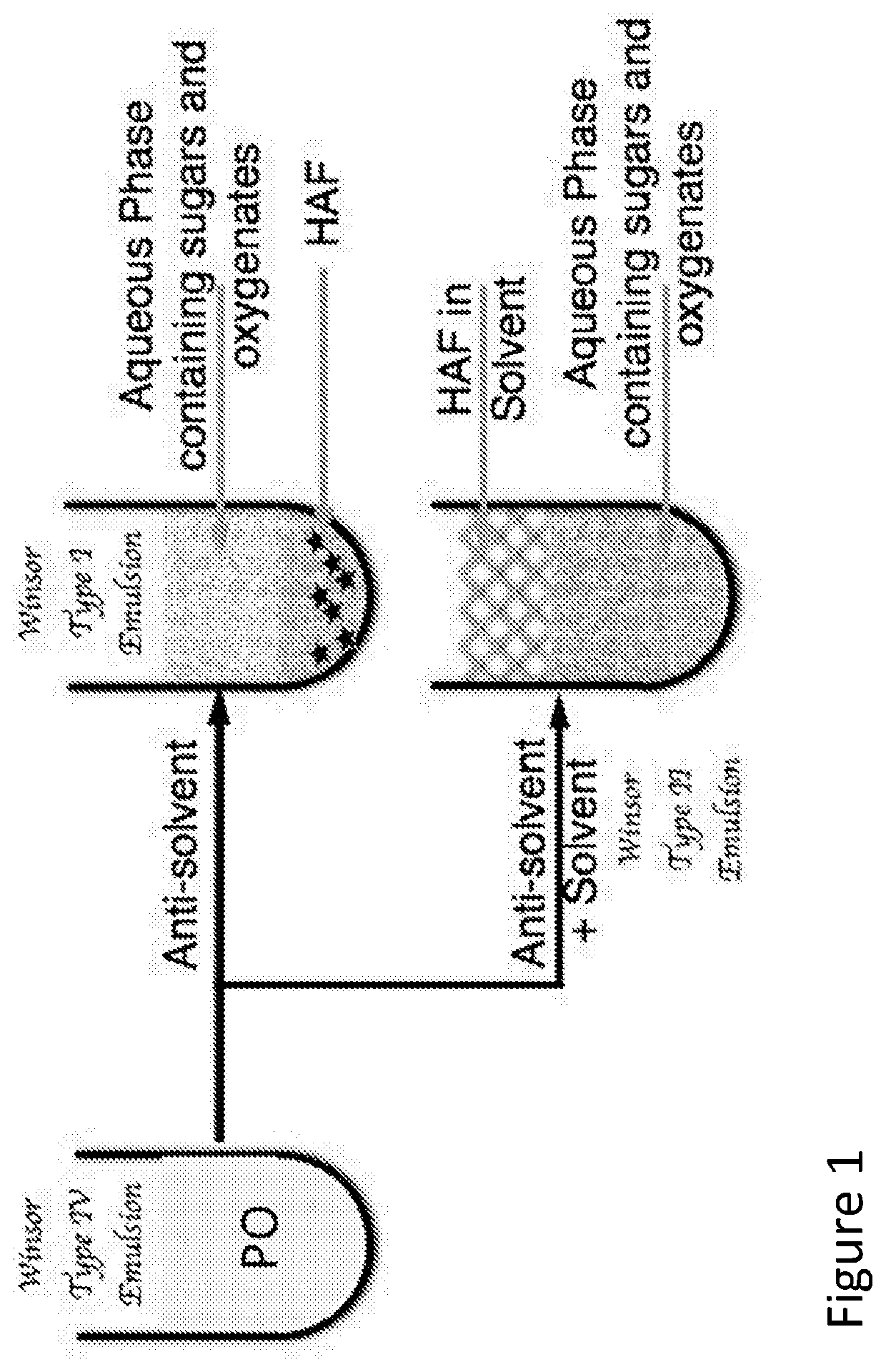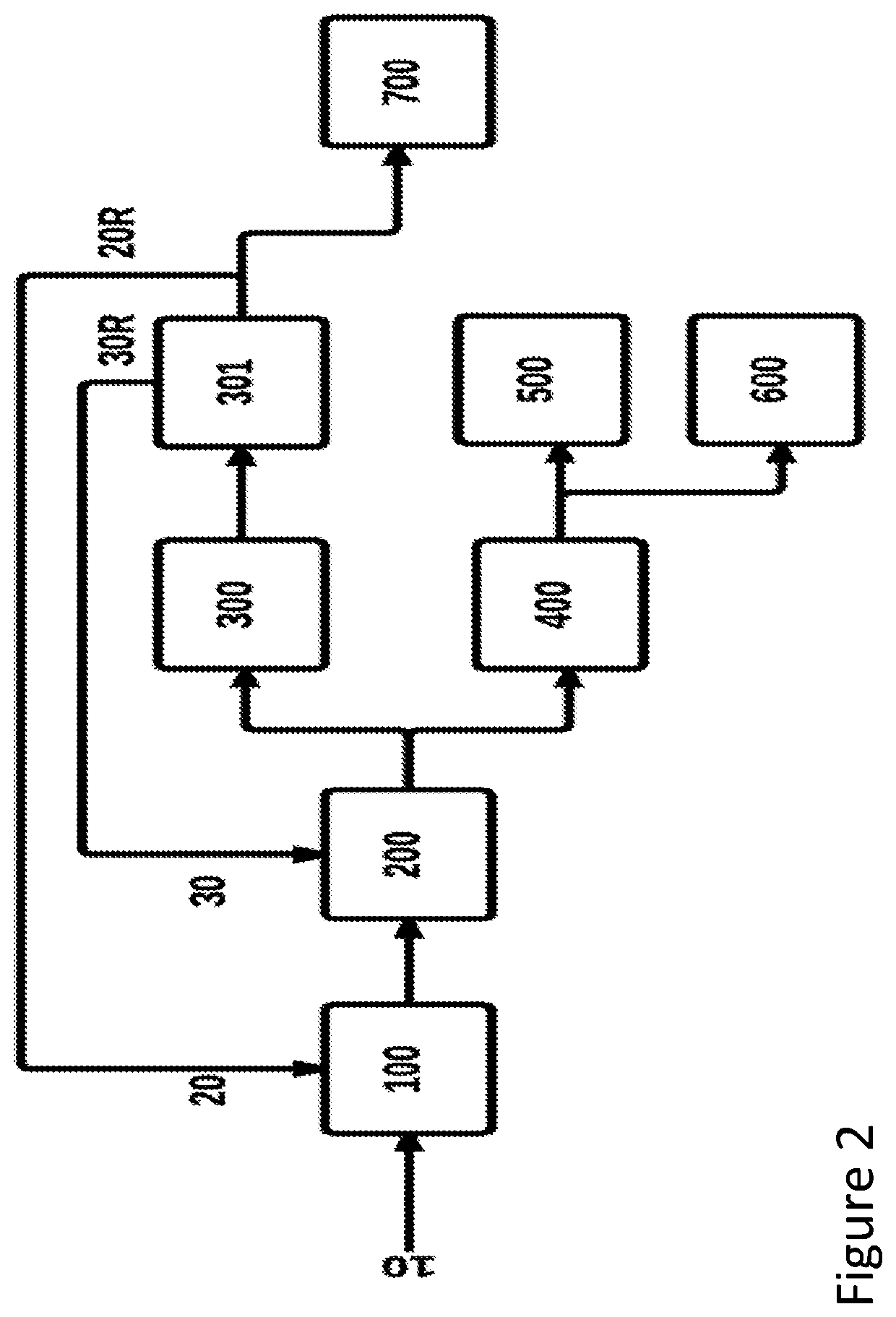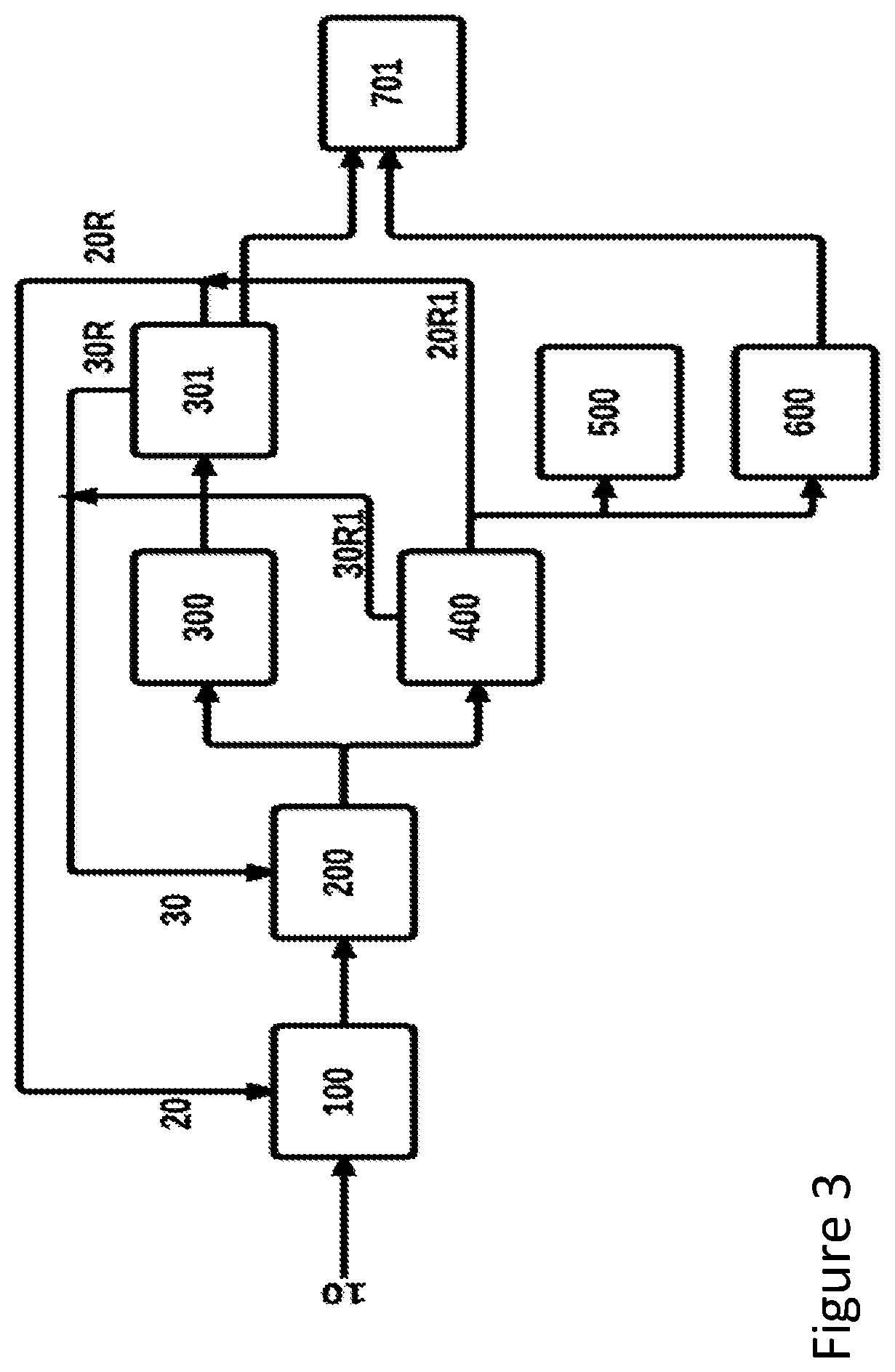Low energy process to produce a hydrophobic oil from biomass pyrolysis liquids
a biomass pyrolysis and low energy technology, applied in the direction of hydrocarbon oil treatment, hydrocarbon oil treatment products, hydrocarbon oil treatment, etc., can solve the problems of inability to meet the requirements of high-temperature pyrolysis,
- Summary
- Abstract
- Description
- Claims
- Application Information
AI Technical Summary
Benefits of technology
Problems solved by technology
Method used
Image
Examples
example 1
[0052]100 grams of PO was placed into a 500 cm3 autoclave equipped with a magnetic stirrer. To this approximately 2-10% mass ratio of anti-solvent (for ex. distilled water) was added with stirring (˜1000 rpm) at room temperature for the duration of 10-60 minutes. To the resultant product, 1-30% mass ratio of solvent (for ex. butyl acetate) was added and stirred vigorously (˜1000 rpm) for the duration of 10-60 minutes. After leaving the mixture at ambient temperature, the liquid product consisted of two phases: a dark organic phase at the top and an aqueous phase at the bottom. These phase-separated products were centrifuged to obtain a clean separation of the organic and aqueous phases. The organic phase was subsequently distilled. Distillation yields a two-phase liquid product, a top light yellow organic phase (solvent) and a minor amount of colourless aqueous phase. The HAF will remain in the distillation flask. Similarly, the aqueous phase from an earlier phase separation process...
example 2
[0055]100 grams of PO was placed into a 500 cm3 autoclave equipped with a magnetic stirrer. To this approximately 2-10% mass ratio of anti-solvent (for example distilled water) was added with stirring (˜1000 rpm) at room temperature for the duration of 10-60 minutes. To the resultant product, 1-30% mass ratio of solvent (for example butyl acetate) was added and stirred vigorously (˜1000 rpm) for 10-60 minutes. After leaving the mixture at ambient temperature, the liquid product consisted of two phases: a dark organic phase at the top and an aqueous phase at the bottom. These phases separated products were centrifuged to obtain a clean separation of the organic and aqueous phases. It has been found that a preferred range for the centrifugation step is at an applied force of 8000 g-12000 g.
[0056]The aqueous phase from the above phase separation process was put in a separatory funnel, and an equal amount of butyl acetate was slowly added, and the funnel was shaken vigorously for severa...
PUM
| Property | Measurement | Unit |
|---|---|---|
| density | aaaaa | aaaaa |
| temperature | aaaaa | aaaaa |
| temperature | aaaaa | aaaaa |
Abstract
Description
Claims
Application Information
 Login to View More
Login to View More - R&D
- Intellectual Property
- Life Sciences
- Materials
- Tech Scout
- Unparalleled Data Quality
- Higher Quality Content
- 60% Fewer Hallucinations
Browse by: Latest US Patents, China's latest patents, Technical Efficacy Thesaurus, Application Domain, Technology Topic, Popular Technical Reports.
© 2025 PatSnap. All rights reserved.Legal|Privacy policy|Modern Slavery Act Transparency Statement|Sitemap|About US| Contact US: help@patsnap.com



